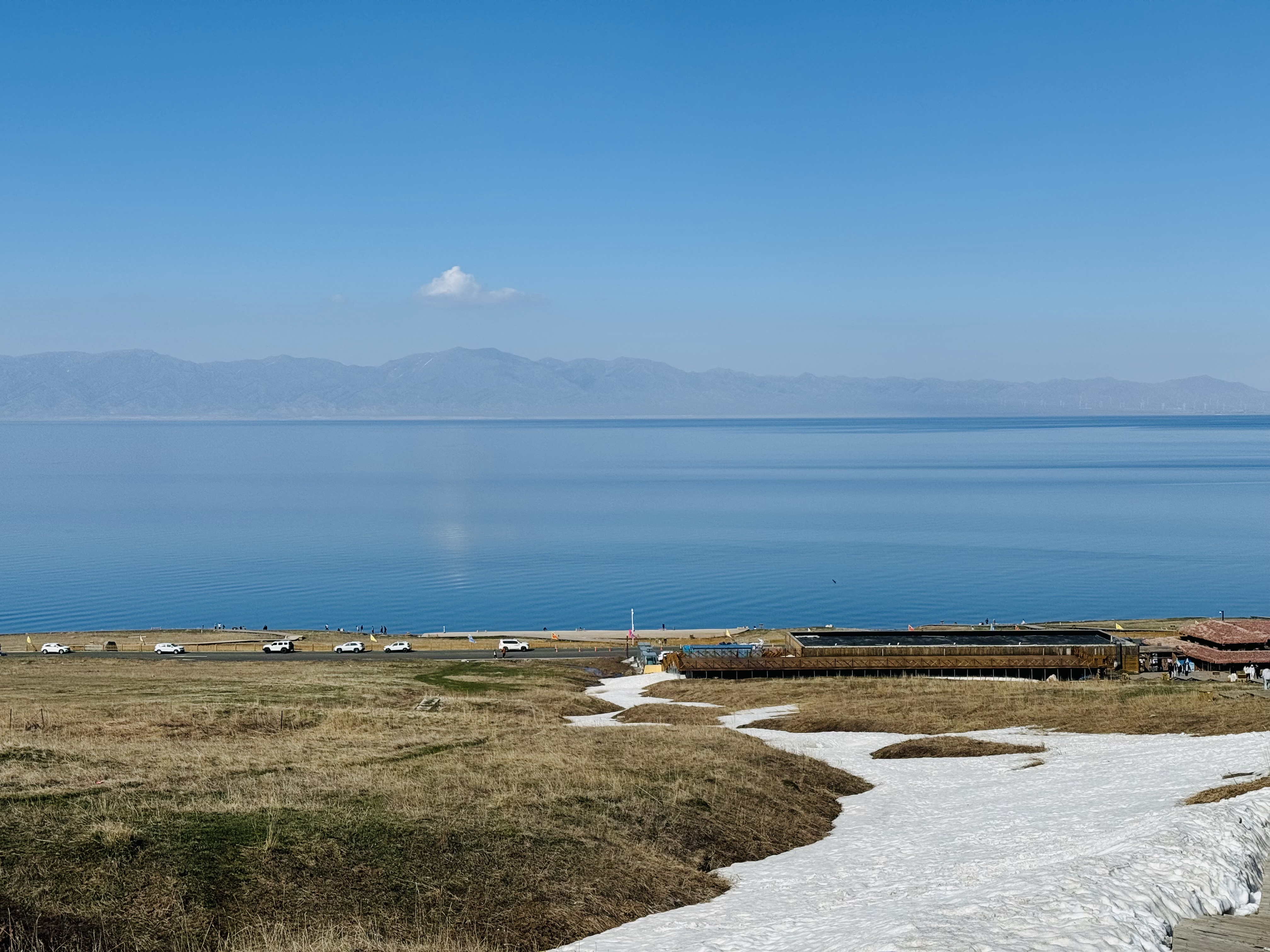There’s a Kazakh legend that tells of a young couple, Sayram and Salimu, whose tears of joy formed a vast lake after they were finally united following years of separation. Standing on the shores of Sayram Lake, surrounded by an almost supernatural blue that seems to pulse with its own inner light, it’s easy to understand why such poetic myths would arise around this extraordinary body of water.
During my exploration of Xinjiang in late April 2024, I dedicated a full day to experiencing this alpine gem, known locally as the “Last Teardrop of the Atlantic” due to the moisture-bearing air currents that travel thousands of kilometers from the Atlantic Ocean to finally release precipitation here.
The Lake of Changing Colors
What immediately strikes any visitor to Sayram Lake is its color – an intense blue that seems almost artificially enhanced, yet is entirely natural. The lake’s remarkable hue comes from its mineral content, depth, and the way sunlight interacts with its crystal-clear waters. Throughout my day there, I watched as the lake transformed from deep cobalt in the morning to a brilliant turquoise by midday, and then to a softer, more reflective azure as afternoon approached.
This photograph captures the lake during that perfect midday period when the sun was high enough to illuminate the entire water surface, yet the angle still allowed for the deep blue to dominate. The patches of melting snow along the shoreline create an interesting contrast, reminding visitors that despite the spring warmth in the air, winter has only recently released its grip on this high-altitude landscape.
According to local Kazakh folklore, the lake was formed from the tears of joy shed by two lovers, Sayram and Salimu. They had been separated for many years by a cruel warlord who had taken Salimu captive. When Sayram finally rescued his beloved after years of searching, they embraced on this very spot, and their tears of happiness were so abundant that they formed this vast lake.
Another legend claims that the lake’s unusual blue color comes from a magical sapphire that lies at its deepest point, placed there by a benevolent spirit to bless the surrounding lands with fertility and prosperity.
These stories are still told by local elders to younger generations, preserving the cultural connection between the people and this remarkable natural feature.
A Sacred Alpine Mirror
At 2,073 meters above sea level and covering approximately 458 square kilometers, Sayram Lake is the largest alpine lake in Xinjiang. The name “Sayram” comes from Kazakh language, meaning “blessing” or “good fortune,” and for centuries, local Kazakh people have considered this lake sacred.
Equipment Used
- Camera: Sony A7IV
- Lens: Sony 16-35mm f/2.8 GM at 24mm
- Filters: Polarizing filter, 2-stop graduated ND filter
- Tripod: Really Right Stuff TFC-14 with BH-40 ballhead
Camera Settings
- Aperture: f/11 (for maximum depth of field)
- Shutter Speed: 1/320s
- ISO: 100
- White Balance: Daylight
- Exposure Mode: Manual
Post-Processing
- Software: Adobe Lightroom Classic and Photoshop
- Adjustments: Minor clarity enhancement (+15), vibrance (+10)
- Selective adjustments to balance sky and water tones
- Minimal noise reduction in shadow areas
- No color enhancement was needed due to the natural intensity of the blue water
Ecological Significance
Beyond its aesthetic appeal, Sayram Lake represents a crucial ecological zone. The lake and its surrounding grasslands support diverse wildlife, including migratory birds that use it as a stopover on their long journeys. The melting snow visible in the foreground of this image is part of the annual cycle that sustains this ecosystem.
Best Time to Visit
The optimal time to visit Sayram Lake is from June to September when the weather is mild and the surrounding grasslands are lush and green. However, my April visit offered a unique perspective with snow still present and fewer tourists.
Getting There
The lake is located about 100km from Bole City in Xinjiang’s Bortala Mongolian Autonomous Prefecture. You can hire a driver in Bole or join a tour group. The drive takes approximately 2 hours along well-maintained roads.
Photography Tips
- Early morning offers the calmest water for reflections
- Midday provides the most intense blue color
- Bring a polarizing filter to manage reflections
- A wide-angle lens is essential to capture the vastness of the lake
- Consider including some foreground elements (like the melting snow or boardwalk) for scale and depth
Accommodation
There are several guesthouses and yurt stays available near the lake during summer months. In spring and fall, it’s better to stay in Bole and make a day trip to the lake.
In our increasingly connected and noisy world, places like Sayram Lake offer rare opportunities for genuine stillness and contemplation. Standing before this vast blue expanse, watching the interplay of light, water, and sky, I was reminded of why we seek out these natural wonders – not just to photograph them, but to be transformed by them, if only for a moment.
